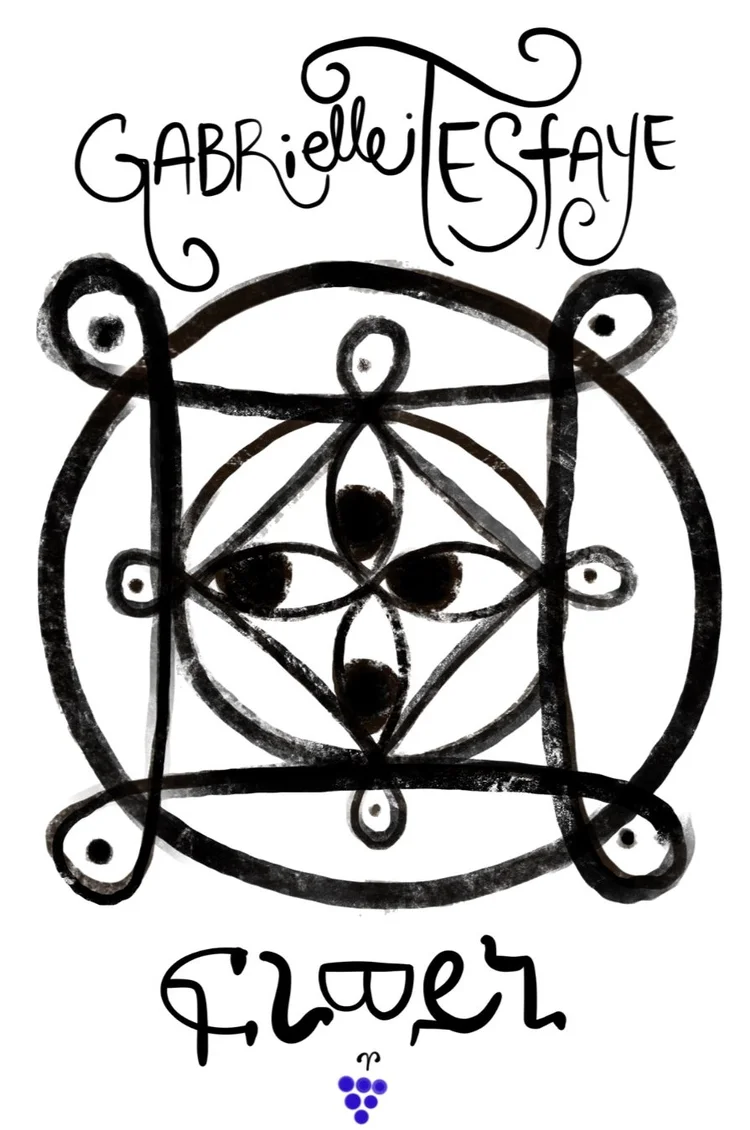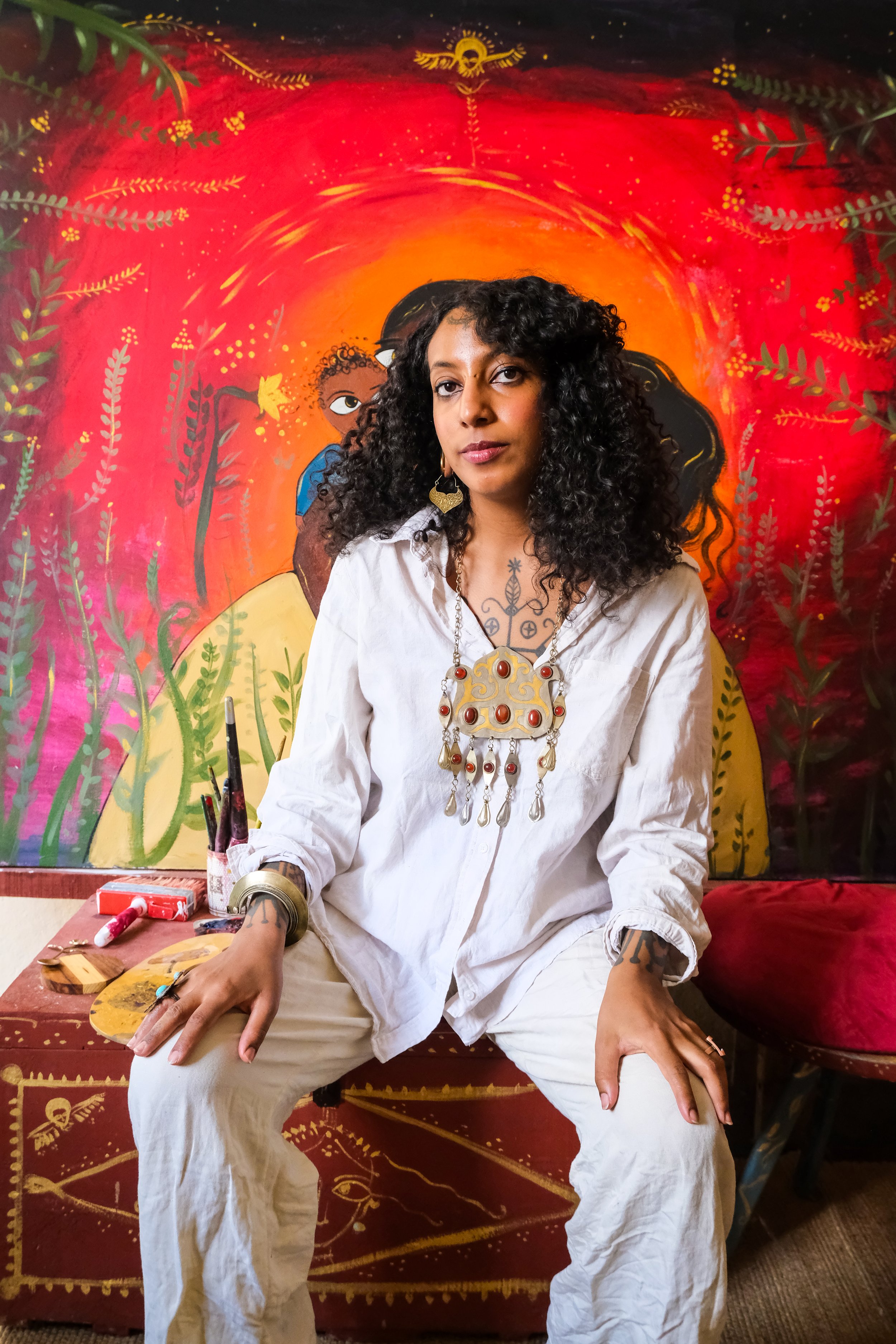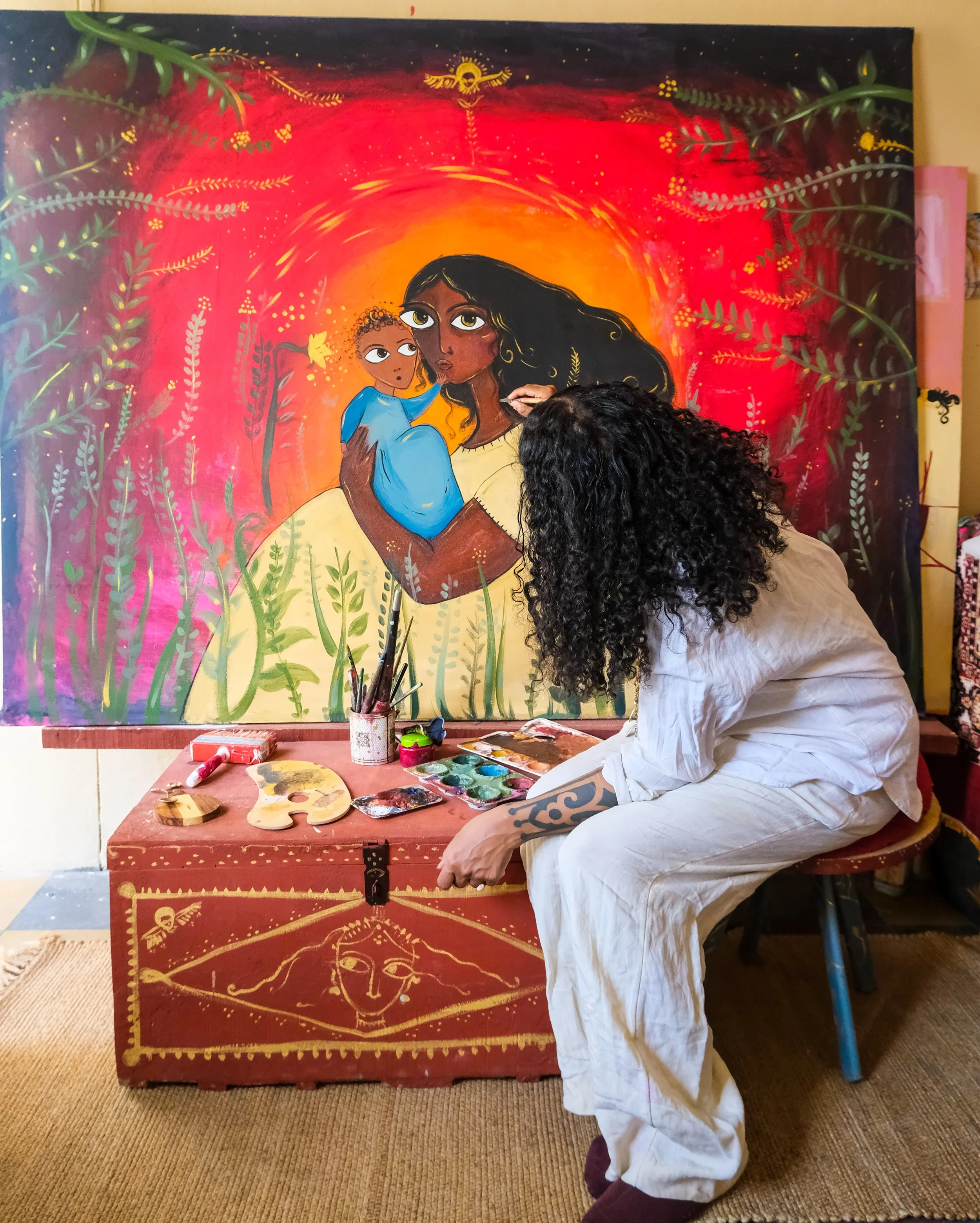Biography
Gabrielle Tesfaye is an interdisciplinary artist versed in painting, animation, film, and design. Her work is rooted in cultural storying and heritage preservation through a combination of art, tech, and traditional craft. Her multicultural roots of Jamaica, India and Tigray echoes itself in her mixed media approach to art making and cross-cultural content.
Outside of exhibiting painting works, she uses her art in the animation studio, creating personal and cultural narrative films. Tesfaye obtained her Bachelor of Fine Art (BFA) from the Peck School of the Arts at the University of Wisconsin-Milwaukee. She completed her graduate studies in Design (MFA) at Virginia Commonwealth University, in Doha, Qatar.
Tesfaye has been recognized in publications such as BBC, Vogue, AFROPUNK, and Majestic Disorder Magazine (print, UK), and has screened and exhibited internationally including London, New York, Ethiopia, Kenya, Zanzibar, India and Sweden. She is the recipient of a series of scholarships and awards, including the Milwaukee Film Brico Forward Fund, and Mary Nohl Suitcase Export Fund. She directed the highly acclaimed film, The Water Will Carry Us Home, was an official selection of Black Star Film Festival, and won best experimental film at Reel Sisters of the Diaspora (NYC). She is currently based in Mekelle, Tigray.
Artist Statement
I am a multimedia artist passionate about cultural storytelling, advocacy, and community-based arts. My practice spans animation, painting, film, and sculptural design. I hold a BFA from the Peck School of the Arts at the University of Wisconsin-Milwaukee and an MFA in Design from Virginia Commonwealth University in Doha, Qatar.
Over the past five years, my work has focused on the impact of war, gender-based violence, and displacement, particularly within Ethiopia. My award-winning animated short Nebsei, which brings to light women’s voices in the aftermath of conflict in the Tigray war (2020-2022), has been screened internationally. One of the most important aspects of making art for me is to truly reveal what has been hidden and erased in the world, and oftentimes, that is the pain of the silenced. In that regard, making art is a form of seeking justice. Creating and films paintings that tell the stories of people in conflicts that are so often saturated in political noise is essential to me. Since relocating to Tigray after the war, I am engaged in post-conflict cultural recovery efforts, designing community art programs, collaborating with local artists, and hosting creative workshops.
My broader goal is to make art that serves as both a mirror and a bridge— How can art bloom healing in places of great trauma? How can art engage conversation to the collective mind of a country, to both reflect and document what has happened? While history books offer the facts, we will look back to the work of artists to listen to the authentic voices of the pasts- how the people felt, what they endured, and what they believed in.


